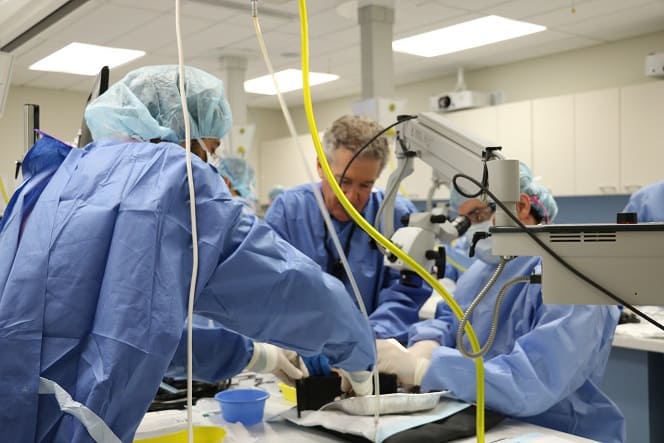How A Bone Conduction Implant Can Help You
A bone conduction implant is an alternative device to regular hearing aids, in that it consists of two components:
- An internal fixture that is surgically implanted and
- An external device called a sound processor that is situated at a 45’ angle behind the ear.
Hearing is stimulated through vibrations once the two components connect via a magnet or screw (abutment). These vibrations generate sound within the ear, sent to the brain via the hearing nerve. In other words, the sound bypasses the outer and middle ear, and the recipient hears sound through the sound processor situated behind their ear. The ear canal thus remains open and free from moulds or domes.
A Bone Conduction Implant Differs From Other Implants In Two Main Ways:
- Other implants are suitable for people with sensorineural hearing loss or middle ear hearing loss, i.e. hearing losses that originate in the inner ear or middle ears.
- The type of sound that stimulates the hearing nerve from other implants is typically electric. In contrast, a bone conduction device produces acoustic sound (like a hearing aid).
When are Bone Conduction Implants better?
A bone conduction implant might offer a solution if you are prone to outer or middle ear infections aggravated by hearing aid use.
Am I a candidate?
You may be considered for a bone conduction hearing aid if you:
- Have a mixed or conductive hearing loss in one or both ears
- Are prone to outer and/or middle ear infections
- Experienced middle ear trauma or
- Present with an outer or middle ear abnormality.
What’s involved in the procedure?
A minimally invasive procedure takes less than two hours to complete under a general anaesthetic. Patients are usually discharged after one night’s hospital stay.
How soon will it start to work?
Four to six weeks post-surgery, the sound processor in the bone conduction hearing aid is activated by an Implant Audiologist.
You will immediately notice a change in sound once connected. Everything new will take some time to adjust to the new sound quality experienced during everyday life. You will be encouraged to keep a listening diary of all the sounds you can hear and those you still have trouble hearing. This will help your Implant Audiologist make the necessary changes to the sound processor at your follow-up visit.
Where can I learn more?
We hold candidate informations sessions where you can come along to learn more about bone conduction implants. You can find information for the next session HERE.
Client stories

Polly's Bone Conductor Story

Peter's BAHA Story



